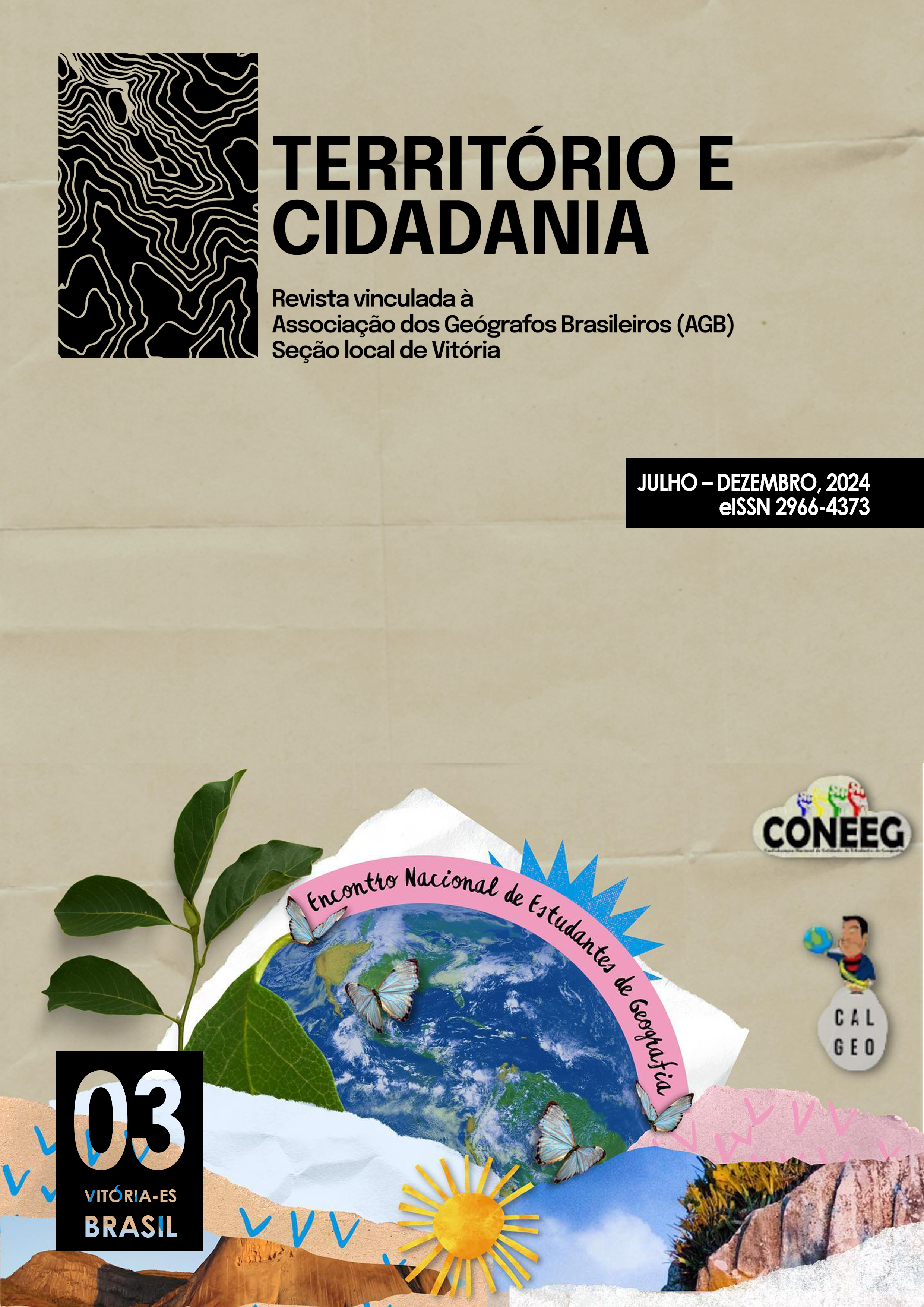Racializing the gaze on a disaster in Espírito Santo in 1985
DOI:
https://doi.org/10.70685/tc.v1i3.3580Keywords:
Climate Change, Housing, Socio-environmental Disasters, Climate JusticeAbstract
Socio-environmental disasters are a result of the disorderly occupation of Brazilian territory, which in turn is a condition and product of the vulnerability of a population that clusters in regions recognized as risk areas, contaminated or subject to flooding and landslides. In this sense, addressing climate change and racial inequalities is something that should be considered in an integrated manner to encompass the dimensions of threats (socio-environmental phenomena) and vulnerabilities (socio-historical phenomena). Starting from the analysis of the trajectory of the black population in Brazil since the colonial period, this work aims to recount the history of a disaster that occurred in 1985 in Morro do Macaco, in the Tabuazeiro neighborhood of the city of Vitória, Espírito Santo. A bibliographic survey and news articles from print newspapers that reported on the disaster of the 1980s were used as a method to produce a historiographical account of the memory production of this neighborhood. In this context of irregular occupations that culminated in the environmental disaster due to heavy rains during that period, the results indicate that the occupation process of Morro do Macaco was neglected throughout its formation and was evident after the disastrous event, as well as the support for the displaced population. They also indicate that, when analyzing the news reports about the disaster, there are intentions to promote imaginaries about the population through the titles of the articles. The main objective of this article is to racialize the sociological gaze on this landslide and enable reflection on other memories that humanize this population segment contained in the Tabuazeiro neighborhood.
References
COSTA, Duane Brasil; AZEVEDO, Uly Castro de (2006) “Das Senzalas às Favelas: Por Onde Vive a População Negra Brasileira” Socializando · ISSN 2358-5161 · ano 3 · nº1 · Jul ·
p. 145-154 Ceará
DE JESUS, Victor (2020) “Racializando o olhar (sociológico) sobre a saúde ambiental em saneamento da população negra: um continuum colonial chamado racismo ambiental” Saúde Soc. São Paulo, v.29, n.2, e180519, 2020 DOI: https://doi.org/10.1590/s0104-12902020180519
FREYRE, Gilberto (1996) “Casa Grande e Senzala: Formação da família brasileira sob o regime da economia patriarcal”. Recife-Pernambuco-Brasil 4 8 a edição, 2003, Global Editora
HERCULANO, Selene (2001). “Justiça Ambiental: De Love Canal à Cidade dos Meninos, em uma Perspectiva Comparada”. Publicado em Justiça e Sociedade: temas e perspectivas. Marcelo Pereira de Mello (org.) São Paulo: LTr, pp. 215 –238
NASCIMENTO, Abdias (1978). O Genocídio do Negro Brasileiro: Processo de Um Racismo Mascarado.. Fátima, Rio de Janeiro, RJ
PARK, Robert. A notícia como forma de conhecimento. In: Steinberg- Meios de comunicação de massa. São Paulo, Cultrix, 1976
ROMERO, G; MASKREY, A. Como entender los desastres naturales. In: MASKREY, A. (ed) Los desastres no son naturales. Cidade do Panamá: La Red. 1993
SANTOS, Milton (1995). “A Questão Do Meio Ambiente: Desafios Para A Construção De Uma Disciplina Transdiciplinar”. Anales de Geografía de la Universidad Complutense n. 15, Madrid 1995 p. 695-705
SMITH, Neil (2003) “Não Existe Desastre Natural”. Social Science Research Council, Brooklyn, NY 11 de Julho
Downloads
Published
How to Cite
Issue
Section
License
Copyright (c) 2024 Território e Cidadania

This work is licensed under a Creative Commons Attribution 4.0 International License.
Autores que publicam nesta revista concordam com os seguintes termos:
- Autores mantém os direitos autorais e concedem à revista o direito de primeira publicação, com o trabalho simultaneamente licenciado sob a Licença Creative Commons Attribution que permite o compartilhamento do trabalho com reconhecimento da autoria e publicação inicial nesta revista.
- Autores têm autorização para assumir contratos adicionais separadamente, para distribuição não-exclusiva da versão do trabalho publicada nesta revista (ex.: publicar em repositório institucional ou como capítulo de livro), com reconhecimento de autoria e publicação inicial nesta revista.
- Autores têm permissão e são estimulados a publicar e distribuir seu trabalho online (ex.: em repositórios institucionais ou na sua página pessoal) (Veja O Efeito do Acesso Livre).


